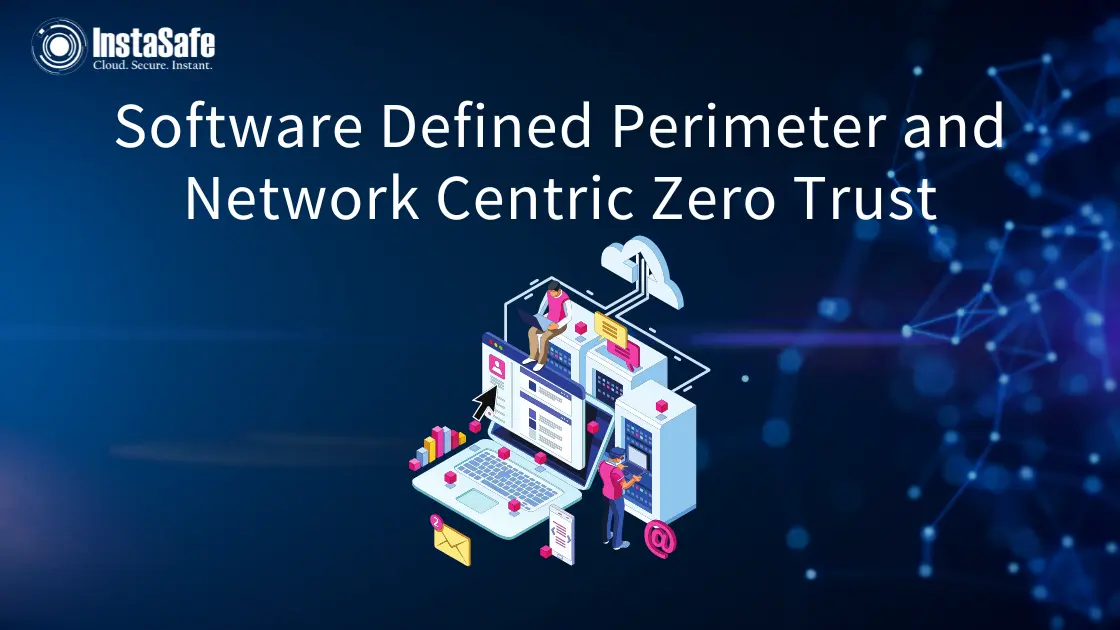Software Defined Perimeter and Network Centric Zero Trust

Traditional networks work on the mechanism of intrinsic security where a person, third party or application is verified and trusted. The perimeter-based security allows users inside the organisation to access internal applications believed to be trustworthy.
Once on the network, the users could access large networks segment without raising alerts to the security teams due to a lack of centralised visibility. This led to frequent security breaches and losses to businesses.
According to an FBI report named Crime Complaint Centre, the losses due to weak cyber security controls amounted to $26.2 billion all over the world between 2016-2019. This indicates that attackers can penetrate the networks due to loopholes in the traditional security architecture.
Security concepts like Software Defined Perimeter (SDP) and Zero Trust Security have stepped up to overcome these challenges. Read on and learn how these concepts are changing cybersecurity.
Software Defined Perimeter and Network Centric Zero Trust
The ideas of Software Defined Perimeter (SDP) and Network Centric Zero Trust were developed by Cloud Security Alliance and John Kindervag, respectively. With the dynamic and ever-increasing threat landscape, these security models are gaining much popularity.
SDP and Network Centric Zero Trust work on the following principles:
- Never trust; always verify
- Least privilege
- Protect data every time and everywhere
Let’s find out more about these network security architectures in detail.
Software Defined Perimeter
Perimeters and VPNs are considered site-centric, where everything is structured around protecting the site from the external environment. This was achieved by using a firewall to prevent external threats.
However, security architectures today are designed to be user-centric. A user-centric approach works on the principle of “least privilege” and “Zero Trust”, where users can access only what they need and are denied access until authenticated.
This is where Software Defined Perimeter (SDP) comes into the picture. SDP allows IT professionals to create perimeters around the network. It is a method to hide the infrastructure connected to the internet, including servers or routers.
SDP implementation allows for improving the security posture of organisations grappling with the challenge to adapt to the expanding and complex attack surfaces.
Based on the use of software instead of hardware, SDP can protect an organisation’s infrastructure, whether it is on-premise or on the cloud.
SDP uses the Zero Trust Security model and helps provide limited access to users while verifying each device and user. This minimises the user’s exposure to critical applications and data, limiting cyber risks.
With SDP, security teams can now secure remote access to employees by deploying security gateways over the on-premise or cloud infrastructure. All this can be achieved without an entire reconfiguration of the existing infrastructure.
Zero Trust Networks
Previously, networks usually had two zones-internal and external. Organisations believe that the internal network is secure or trustworthy while the external environment is hostile. Once you have access to the internal network, you can move freely within the network as a trusted user.
However, with employees working remote, security and IT professionals realise that the traditional architecture is unable to secure user access.
The Zero Trust Network model is a data security method that relies on the “never trust, always verify” approach to ensure cyber security. It demands authorisation and authentication to access applications on the network.
The idea of the Zero Trust model network security was given by John Kindervag to protect an organisation’s critical assets. He believed that traditional security models operate on the false assumption that every user in the organisation deserves trust.
So, the Zero Trust network model works on the assumption that no interface, employee or device should be trusted as trust is a threat to network security.
In most cases, misuse of privileged credentials is the cause behind data breaches. Hence, Zero Trust Network Security acknowledges this and tries to eliminate the element of trust from the entire system.
Based on constant evaluation of risks, the Zero Trust Security model requires device verification and user authentication irrespective of their location within the network perimeter. It helps prevent breaches and lateral attacks by unauthorised users within the network.
Conclusion
The cyber security landscape has never been more vulnerable to threats than it is today. Employees today access multiple applications from homes, coffee shops, planes, etc. Organisations ensure that these applications are available irrespective of the user or device’s location.
However, ensuring network security is also becoming a daunting task for IT and security professionals. Today, the hardware-defined network perimeter is no longer viable.
With an SDP and Network Centric Zero Trust, you can distribute the network assets evenly on an individual basis and centralise access control, ensuring secure access across the network.
InstaSafe Zero Trust solutions offer you the most robust security tools and mechanisms that ensure the protection of your cloud-based and remote infrastructure from cyber risks. With our Zero Trust Network Access, you can ensure complete visibility and granular access control. So, check out our website and book a free demo today.
Key Products
Multi Factor Authentication | Identity And Access Management | ZTNA | Zero Trust Application Access | Secure Enterprise Browser
Key Features
Single Sign On | Endpoint Security | Device Binding | Domain Joining | Always On VPN | Contextual Access | Clientless Remote Access | Device Posture Check
Key Solutions
VPN Alternatives | DevOps Security | Cloud Application Security | Secure Remote Access | VoIP Security
